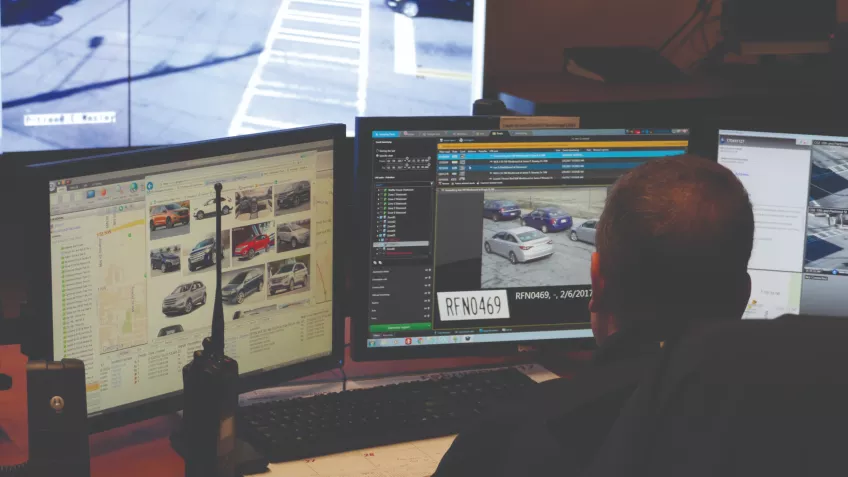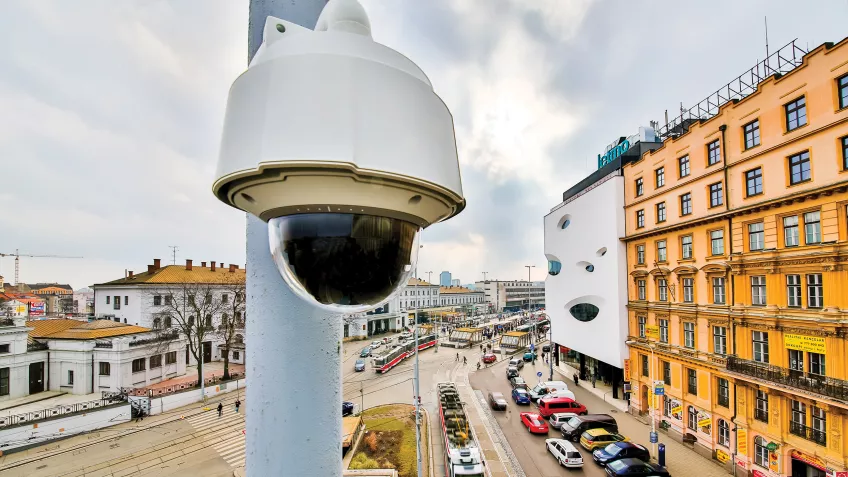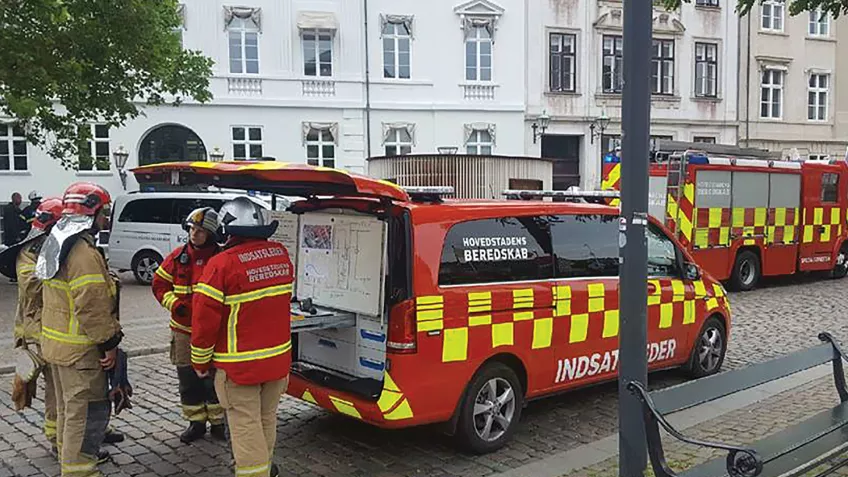
The number of people expected to be living in cities is set to double by 2050 to some 6.4 billion urban dwellers. To cope with this population increase, and to adjust to the new needs of larger cosmopolitan environments, cities will require new and innovative ways of managing their assets and resources.
This is addressed by various smart city initiatives, where clever ways of connecting technologies, data and stakeholders, result in completely new fashions to manage e.g. traffic, street lighting, parking, waste collection or public safety. But for a city to become truly smart, it also needs to break the often-existing silos between different city departments, as well as the silos between public and private entities.
Sharing surveillance cameras to benefit all
Currently, in many cities, surveillance systems are operating as silos, where different components are not directly linked to each other. There may be hundreds of cameras for traffic, hundreds for city surveillance, hundreds at retailers and hundreds within public transport, with very limited scope of cooperation between these silos.
Surveillance represents a typical area where a city can become smarter when selected data is shared across multiple stakeholders. By breaking down the barriers between the individual silos, several benefits can be gained – for the city, for private entities and for the citizens.
Surveillance cooperation between public and private
Project Green Light Detroit is an example of a project that bridged the gap between the public and private sector. A few years ago, when city officials in Detroit looked closer into crime statistics, they found that nearly a quarter of the city’s violent crimes happened close to a gas station.
With the main objectives to deter and solve crime, improve neighborhood safety, and to promote the growth of local businesses, the city and police department partnered with local businesses and launched Project Green Light Detroit. In order to sustain and develop the project while sharing the costs, stakeholders each have responsibilities, e.g.:
- Individual private businesses are required to install & maintain high-definition cameras, a high- speed network connection and adequate internal and external lighting
- The City of Detroit and the police, have established a real-time crime center, with devoted staff to effectively receive, monitor and analyze video feeds from participating businesses
Today, more than 200 businesses are part of the project, and violent crimes have been reduced by up to 50%, in some of the monitored areas.
Another interesting project along the same lines is Operation Shield in Atlanta, where more than 10,000 public and private cameras are connected to a surveillance network. This provides the Atlanta Police Department with a more holistic real-time view of situations across the entire city, including public schools, the transit system, local businesses and multi-family housing properties.

The cooperation allows the cost of efficient and high-quality surveillance installations to be shared, saving individual budgets without a loss of coverage. By breaking down silos between private or public institutions, a city’s network surveillance system can be expanded. This gives local law enforcement access to all cameras which allows them to better monitor the city, act quicker and with more precision when necessary.
Connecting departments to achieve multiple goals
Aside from citizen safety and security, an interconnected network of cameras can also help to address other city challenges. For example, the city of Brno, in Czech Republic, has implemented a connected video solution to deal with the traffic issues around the city center, and to reduce petty crimes. Brno’s Road Administration installed cameras at selected crossroads, tram terminals and in the central underpass of the central railway station.

As a result, the Road Administration and Municipal Police are now able to monitor traffic in key central locations from the newly built monitoring center. The new cameras provide a much clearer real time update on traffic incidents and in higher quality. Additionally, the local law enforcement can take advantage of the cameras’ abilities such as the powerful zoom to track down vandals, undisciplined drivers and petty thieves.
By breaking down the silos, various entities such as law enforcement and traffic management centers can have access to more cameras which enables them to have a widened monitoring capability. More coverage means incidents can be managed much more efficiently as operators will be able to assess the situation and pass it on to the relevant authorities depending on the issue.
How emergency and public services can profit from connected camera networks
Connected video solutions can also increasingly help the emergency services. The city of Copenhagen wanted to streamline their response and reduce the time it took for them to respond to incidents, including fires, especially in cases where human lives were at risk.
In the past, emergency services had relied on radio communication to pass on information about the conditions of a fire. The high-pressure situation, however can mean that some important details are unintentionally omitted. As a result, the fire services decided to implement a new way of providing reports in which the internal operations center could better understand the gravity of the situation. They adopted a networked streaming video solution.
The fire engines are equipped with cameras, one at the front and one at the back, which relay detailed and visual information back to the operations center. The officer in charge of observing the cameras can then decide whether or not further reinforcements need to be deployed to help tackle the fire. Additionally, the officer can enable experts access to the footage in order to determine if the building is in any danger of collapsing.

This achieved a much better response time and efficient response overall, as the service was able to assess the situation in real time. Furthermore, the live view from the incident scene has helped to improve public service information in critical situations. The internal operations management can make quick and informed decisions regarding if, when and how to reach out to the public, without the information being passed through various people, which would take a lot longer.
By creating more connected camera networks, in this instance, emergency services can access footage in real time and pass it to others, such as building experts, in order to enable a better response to the situation. In allowing such a partnership, the city can become ‘smarter’ and have a positive impact on the lives of the citizens who reside there.
Smarter cities with cross-silo solutions
Sharing video between various entities offers great possibilities to improve operational efficiency and collaboration between multiple stakeholders. And it serves as a great example of how breaking down silos can help a whole host of organizations to improve citywide efficiency. It can help manage traffic, enable various services to respond quicker and better to any incidents, and to provide citizens with a lasting sense of security.
In the case of public-private partnerships, sharing the cost and burden associated with some of the more upmarket systems can be a real benefit that all can enjoy. Such collaborations allow law enforcement to monitor a larger area and to respond more efficiently to issues happening all around a city. Some smart cities have already implemented connected video solutions across silos to better manage their resources and make life better for their citizens – will yours be next?
